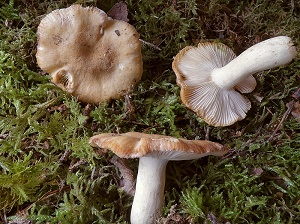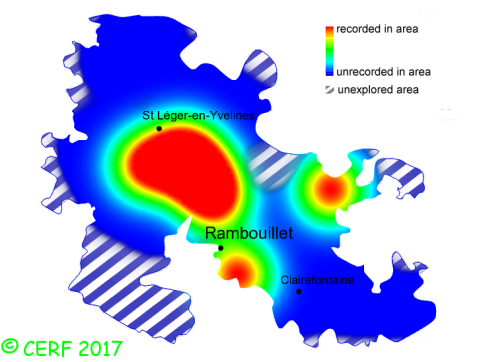| Russula farinipes Romell |
|
|
|
|
|
|
The cap is yellow to ochre, convex then expanded and depressed; its margin is strongly striate. The cap surface is smooth, viscid or sticky. The stem is white to straw, without ring. The flesh is white, unchanging; its taste is acrid; the odour is faint, fruity; its texture is grainy (breaking like a chalk stick). The gills are yellowish, slightly adnate to decurrent, crowded . The spore print is whitish. This species is mycorrhizal. It grows on the ground, in mixed or deciduous woods, on a rather clayey-calcareous soil, most of the time with beech. The fruiting period takes place from July to November.
Chemical tests : flesh becoming salmon pink when in contact with iron sulphate; slow and very faint reaction to Ga´ac (almost negative);moderate purple reaction of cap cystidia to sulpho-vanillin. Distinctive features : yellow to ochre cap; white flesh, but yellow under cap surface; fruity odour; white spore print; straw-yellow gills, not brittle; small size Russula farinipes is quite rare and localised in the forest of Rambouillet, and is infrequent, more generally speaking . | ||
|
page updated on 14/01/18

